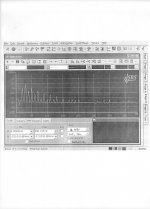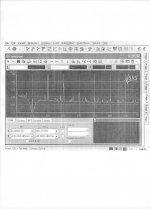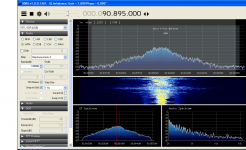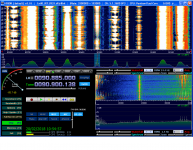More C stuff
http://www.kemet.com/Lists/Technica... Class-I C0G MLCC and SMD Film Capacitors.pdf
THx-RNMarsh
http://www.kemet.com/Lists/Technica... Class-I C0G MLCC and SMD Film Capacitors.pdf
THx-RNMarsh
Just replaced the Nikko with a Nakamichi ST-7. What a difference! Too bad the Nak isn't mine, it's nice.
Thanks for posting these links Richard
Howie, just glanced over your paper. Looks interesting, I'll read it. Thank you for posting the link.
-Chris
Thanks for posting these links Richard
Howie, just glanced over your paper. Looks interesting, I'll read it. Thank you for posting the link.
-Chris
Thanks Richard, I am well aware of this, the examples I quote are single sided pcb's.The pcb as a dielectric makes itself known when you have traces above and below.....
Pcb types, component types/materials, solder alloys, enclosure materials etc all contribute to 'house sound' ime.
Dan.
Once again PMA, it is not distortion in an input cap that is most important, but the FEEDBACK CAP, that can't use 18K as a load. However, all polar caps have significant DA, much more than even Mylar, and even with using Mylar, people have told me, can be audible in my designs. I chose Mylar more than 40 years ago, thinking that it could do the job, but it didn't from listening criticism by others who were associated with my designs at the time. What a disappointment it was! Then I had to look at PP, which was much larger, and more expensive. Finally, I just switched to servos, and have never looked back. Even the JC-3 JR phono stage is servoed. That is part of what makes it successful.
The feedback cap (connected from output to -input) is usually 5 - 20 pF and there is no problem to use the NPO/COG type and DA is then a non-issue. The feedback cap DA is a real issue in a precision opamp integrator for instrumentation purposes. Not in the audio amplifier.
In case that speaking about the "feedback cap" you mean the capacitor in the bottom branch to ground, then the value is much higher than the 4.7uF that I tested. It would be rather something like 220uF to keep the low frequency corner in Hz (like 220uF + 470R). Then again, there is almost no AC voltage accross the cap so no distortion. And this 220uF cap may be easily shunted with a 100nF polypropylene.
This >40 years old mylar story is a part of your marketing self-promotion here. Properly used capacitors make no problem in audio. It is as easy to make some mistake or overlook something in the DC servo design as to use an improper capacitor.
People continue to resist quantifying the effects in the exact applications context.
This is how this threads goes, it is easier than to bring real data. This is a lounge pub thread, not an engineering or scientific thread. Stories are more appreciated than the real data.
Many over here have enough test equipment to do your own work and even CAD if you need more or specific data.
Low THD is an OK indicator of what is audible, I guess (??). It is the zillions of people who say they hear a difference between a polar cap and no cap. I am not willing to ignore that and write it off as mass hysteria. If it isnt due to DA and the many other parameters which change with volt and freq and temp - and OMG in the error correction fb path ?? ... I dont know what it is, either.
Here is one way to look at it ---- decades have gone by and everything from FM tuners and RIAA and PA and recorders etc have had polar caps replaced -- tube and solid state.. over all cultures on the planet. Its like aspirin for a long time - centuries maybe -- it worked as a pain killer. just ask the person who took it if he detected less pain ... but what could be measured? Eventually someone discovered how it blocked pain. But, it was accepted long before science had thier answer. And, they still cant measure pain levels or prove or disprove there is pain by any non-invasive means.
I can live with not knowing and accept that it works for a lot of people.
THx-RNMarsh
Low THD is an OK indicator of what is audible, I guess (??). It is the zillions of people who say they hear a difference between a polar cap and no cap. I am not willing to ignore that and write it off as mass hysteria. If it isnt due to DA and the many other parameters which change with volt and freq and temp - and OMG in the error correction fb path ?? ... I dont know what it is, either.
Here is one way to look at it ---- decades have gone by and everything from FM tuners and RIAA and PA and recorders etc have had polar caps replaced -- tube and solid state.. over all cultures on the planet. Its like aspirin for a long time - centuries maybe -- it worked as a pain killer. just ask the person who took it if he detected less pain ... but what could be measured? Eventually someone discovered how it blocked pain. But, it was accepted long before science had thier answer. And, they still cant measure pain levels or prove or disprove there is pain by any non-invasive means.
I can live with not knowing and accept that it works for a lot of people.
THx-RNMarsh
Last edited:
PMA, I take exception to your criticism of my 'design experience'. It just so happens that in about 1977, when I designed the Symmetry 'transient perfect' Crossover, I used some 1uF Mylar caps that were compact, and measured virtually perfectly, as output coupling caps. I already knew about the problems with Tantalum and ceramic coupling caps, and since these Mylar caps were small, linear, cost effective, etc. they were a staple in my design inventory. However, in 1978 or so, I was told by Symmetry that they had shorted out the cap, (this was easily done without much of an offset problem) and they found that the crossover sounded better. I really did not want to believe it, as I had no reason to fault the cap (at the time), but unlike you PMA, I listened to what my critics said. About then, Richard Marsh and Walt Jung did their looking into caps, and people in my vicinity (Berkeley) were making cap comparisons, so I got introduced to PP and polystyrene caps and I actually tried them out, rather than play the engineer who knows everything. The PP and PS caps worked BUT they were so large! So, in later designs I decided to servo, as reasonable cost jfet input IC's were being brought out that were laser trimmed for good offset. I could stick my Mylar cap there, and it would hardly effect the sound quality, no matter what the problem was, as the servo can be almost completely removed from the main path and its potential 'non-linear' effects greatly reduced by output scaling and I have continued doing this for the last 35 years or so. Why do you want to go back to the old ways of doing things? What are you trying to 'sell' us?
Attachments
The shunt electro makes large audible difference in this location.....In case that speaking about the "feedback cap" you mean the capacitor in the bottom branch to ground, then the value is much higher than the 4.7uF that I tested. It would be rather something like 220uF to keep the low frequency corner in Hz (like 220uF + 470R). Then again, there is almost no AC voltage accross the cap so no distortion. And this 220uF cap may be easily shunted with a 100nF polypropylene.
Shunting with low value solid/film cap is mandatory ime, yielding cleaner/clearer sound and counter intuitively subjectively extending both highs and lows.
Polyester/mylar/greencaps as shunt or series are death to audio, they just sound 'wrong' ime.This >40 years old mylar story is a part of your marketing self-promotion here. Properly used capacitors make no problem in audio. It is as easy to make some mistake or overlook something in the DC servo design as to use an improper capacitor.
Dan.
Last edited:
That's why we in the peanut gallery feel so welcome to contribute tooThis is how this threads goes, it is easier than to bring real data. This is a lounge pub thread, not an engineering or scientific thread. Stories are more appreciated than the real data.

Stories are more appreciated than the real data.
PMA, I take exception to your criticism of my 'design experience'. It just so happens that in about 1977, when I designed the Symmetry 'transient perfect' Crossover, ?
Well that prophesy self-fulfilled pretty quickly 🙂
Radio reception is a very interesting topic technically and context wise and I may be one of the last to deny the technical beauty of analog receivers both tubes and transistors.
Now, the RF spectrum survey, radio station reception conditions, antenna/feed line performance, the all important IF bandwidth requirement and much more can be monitored with the use of a Software Defined Radio (SDR) unit (*) and some freeware software
It is not easy to think of what the flexibility and versatility of such software can provide in terms of reception optimisation and visualisation of various sections of an existing receiver’s unit.
You see, as a consequence of it’s adjustment’s flexibility, an SDR unit can also be used as a multifunction tuner monitor instrument by feeding it’s input with a signal from various RF and IF points from an analog tuner that we want to service, adjust, fine tune.
It’s value as a multiple band-multi mode communication receiver is to be experienced.
George
(*)The SDR units start from around 20 US$. 500 US$ is where you should stop.
Mine is at the bottom of the evolution/price list (RTL-SDR with RTL2832U chip)
Now, the RF spectrum survey, radio station reception conditions, antenna/feed line performance, the all important IF bandwidth requirement and much more can be monitored with the use of a Software Defined Radio (SDR) unit (*) and some freeware software
It is not easy to think of what the flexibility and versatility of such software can provide in terms of reception optimisation and visualisation of various sections of an existing receiver’s unit.
You see, as a consequence of it’s adjustment’s flexibility, an SDR unit can also be used as a multifunction tuner monitor instrument by feeding it’s input with a signal from various RF and IF points from an analog tuner that we want to service, adjust, fine tune.
It’s value as a multiple band-multi mode communication receiver is to be experienced.
George
(*)The SDR units start from around 20 US$. 500 US$ is where you should stop.
Mine is at the bottom of the evolution/price list (RTL-SDR with RTL2832U chip)
Attachments
George: SDR can do some amazing things. I watched cellular technology evolve from std 2 step downconversion of original GSM (80s tech) to Zero IF with some pretty impressive ADC on the front end to just slurp up a chunk of spectrum and let DSP deal with it. On the transmit side even more fun. New modulation scheme? just do a software update. Horribly inefficient for the PA but shiny's need their bandwidth.
Horribly inefficient for the PA but shiny's need their bandwidth.
If you mean SDR is CPU usage hungry, yes it is (the audio quality also is affected by shortage of CPU resource).
But SDR's technical achievements are great and today CPU power and memory are cheap. 🙂
George
No I mean that an RF power amplifier that will handle all expected modulation schemes runs about 10% efficiency even with magic feedforward and heaps of DSP to control crest factor.
Just a question, PMA, If you have a dinner with a singer, would you say to him "I've listened to your last album, it's bad."This >40 years old mylar story is a part of your marketing self-promotion here. Properly used capacitors make no problem in audio. It is as easy to make some mistake or overlook something in the DC servo design as to use an improper capacitor.
I doubt J.C. have nothing to sell, here, but I wonder what *you* have to, on your side, to be so rude ?
Regarding your "Properly used capacitors make no problem in audio", it is only YOUR opinion that contradict the one of several people here. Could-you provide evidence to support your claims?
On my side, I can hear the difference, under certain conditions, between different capacitances (and measure-it). I don't believe the 'coloration' carefully chosen capacitors can bring as a real problem.
Others, yes?
It is just *my* opinion and I accept somebody else to have a different one.
You don't like servos ? You are allowed-to. But, often, it gives better results, *with less money and size* than a good film cap, reason why, I believe, Richard promote them.
At the end, the commercial success of a product will be the only judge for the accuracy of any audio designer.
Last edited:
You appear to be suggesting that people who think that capacitors are not quite as important as you think would therefore be quite happy with high-k ceramics as coupling capacitors. I'm not certain whether this is caused by genuine confusion on your part, or is it an attempt at humour?john curl said:Of course, most of you would be perfectly happy with it as it was.
Not many designers are good at both audio and radio. RF designers think audio is simple (which, by comparison with RF, it almost is) so they can make mistakes. Audio designers don't think of RF at all, so their circuits can oscillate or pick up interference.
Mylar/polyester caps can be audible due to nonlinearity, not DA.However, all polar caps have significant DA, much more than even Mylar, and even with using Mylar, people have told me, can be audible in my designs. I chose Mylar more than 40 years ago, thinking that it could do the job, but it didn't from listening criticism by others who were associated with my designs at the time. What a disappointment it was!
I too miss SY around here. His absence means more work for people like Scott. In his last few months on here I think I detected an increasing short-temperedness with people talking nonsense, so maybe he had to quit for the sake of his blood pressure? I am sometimes tempted to take the same action, as repeatedly teaching basic electronics to reluctant students (including those making money from audio) can become tiring.
In an ideal world someone claiming an unlikely audio phenomenon would have to present a back-of-envelope calculation estimating its magnitude. That ought to tell us which are worth exploring, and which can be dismissed. However, we do not live in an ideal world so a calculation showing a -140dB effect is not used as a means of dismissing the alleged effect, but instead used as 'evidence' of the audibility of low-level effects. Such effects become quite inaudible when people do not know they are there, but that is another story!
Deciding truth by money is almost as daft as deciding truth by democratic vote. "I must be right because I have sold lots of amplifiers/articles" is a cry we sometimes hear on here; we laugh at such foolishness.Tournesol said:At the end, the commercial success of a product will be the only judge for the accuracy of any audio designer.
Just a question, PMA, If you have a dinner with a singer, would you say to him "I've listened to your last album, it's bad."
I doubt J.C. have nothing to sell, here, but I wonder what *you* have to, on your side, to be so rude ?
Regarding your "Properly used capacitors make no problem in audio", it is only YOUR opinion that contradict the one of several people here. Could-you provide evidence to support your claims?
On my side, I can hear the difference, under certain conditions, between different capacitances (and measure-it). I don't believe the 'coloration' carefully chosen capacitors can bring as a real problem.
Others, yes?
It is just *my* opinion and I accept somebody else to have a different one.
You don't like servos ? You are allowed-to. But, often, it gives better results, *with less money and size* than a good film cap, reason why, I believe, Richard promote them.
At the end, the commercial success of a product will be the only judge for the accuracy of any audio designer.
1) This is a misunderstanding in many points and I am not criticizing JC's designs. He says that I am criticizing his designs, not me. My goal is only a technical discussion, not a personal discussion. If I criticize, then I criticize ideas or circuit solutions, not the persons, and that's a BIG difference.
2) Re properly used capacitors, I am supporting my claims by measurements, in case that the inserted capacitor does not worsen measured parameters, then there is no problem. I became quite skeptical to subjective claims like "I think I can hear a difference" and I have supported my opinion by numerous tests here at diyaudio where people were not able to tell the difference in ABX foobar tests even between the original file and the one recorded through the complete power amplifier and the A/D -- D/A chain used.
3) I do not know why you think that I do not like servos. You may check my webpage Pavel Macura audiopage and see that most of the designs use the DC servo. My opinion is that DC servo is fine but not absolutely necessary. And the servo design has its specific issues.
4) I do not think that the commercial success is the only judge because audio is a consumer discipline and as such is a target of intensive marketing strategies. If the commercial success was the only measure, then mp3 might be considered better audio format than lossless formats or than SACD or DVD audio. Number of mp3s sold is much higher than DVD audios, isn't it?
If I sold about 1000 preamplifier kits in the past, was it a "success"? I do not know, for me it was just a hobby and I stopped sales in 2012, as it was extremely time consuming and brought no new experience to me after some time.
Last, I consider these debates totally useless and I appreciate those who are bringing facts, results, circuits, measurements, to the debaters and self-promoters.
Last edited:
Music is not a religion. Its art.Deciding truth by money is almost as daft as deciding truth by democratic vote
Audio design is not a science, it is technology.
If you are an audio designer, the company that give-you your salary use you to design successful commercial products.
If it is DIY, you are free to do and believe what you want: it hurts nobody.
Why this strange notion of "truth" ?
Hasn't it ALWAYS been the case that audiophile labels rarely produce stuff you would actually want to listen to. <snip>
Yes, that!
- Status
- Not open for further replies.
- Home
- Member Areas
- The Lounge
- John Curl's Blowtorch preamplifier part III





